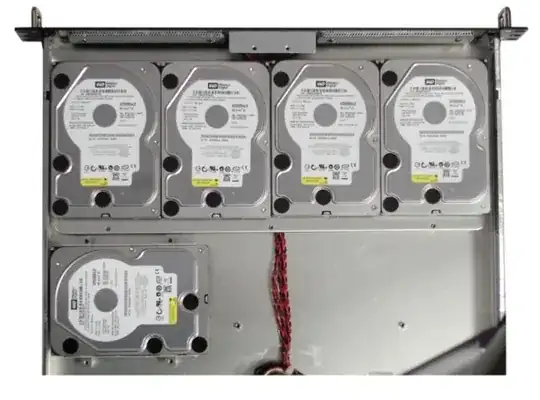I am using an external eSATA device which takes 5 SATA drives and presents them as one large HW RAID5 to linux (ubuntu).
It uses a SiI3726 chipset.
Linux sees and handles the sata device just fine, but I'm wondering if there's any way to query/monitor the RAID5 status that's hiding behind this HW RAID.
(from dmesg -- I swear I don't have a 16T single drive...)
[ 16.409678] sd 4:0:0:0: [sde] 31255691264 512-byte logical blocks: (16.0 TB/14.5 TiB)
[ 16.409727] sd 4:0:0:0: [sde] Write Protect is off
[ 16.409730] sd 4:0:0:0: [sde] Mode Sense: 00 3a 00 00
[ 16.409752] sd 4:0:0:0: [sde] Write cache: disabled, read cache: enabled, doesn't support DPO or FUA
[ 16.463573] sde: sde1
[ 16.463785] sd 4:0:0:0: [sde] Attached SCSI disk
(from lshw)
*-disk:4
description: ATA Disk
product: SATA H/W RAID5
physical id: 4
bus info: scsi@4:0.0.0
logical name: /dev/sde
Any guidance on peering at the system underneath would be appreciated.
RAID status is my big concern, but actual drive models would be helpful too.
I looked at some libatasmart tools, but couldn't find anything regarding SATA port multipliers in general.
There are utilities to check/set the RAID settings in OSX/Windows, so it is apparently possible. I'm looking for a way to do this in Linux and then potentially add to Nagios, etc.
Here's what the HW looks like:


